Trapezius Muscle Pain
Trapezius muscle pain is a very common ailment in this fast pacing modern world. Be it students, homemakers, IT workers, laborers, or professional athletes, everyone has stuffed from trapezius pain at one point in time.
Since it is such a widely used muscle, injuries or pain in the Trapezius muscle are common either due to overuse injury, strain, spasm, or trigger points.
The Trapezius muscle is commonly it is referred to as Traps. And unfortunately, the pain in them is just like a trap, quick to get into, a bit tricky to get out of.
But hey, no worries. We are here to make that tricky part very simple and easy. But before getting on with the topic, let us do a quick overview of the Trapezius muscle.
Overview of the Trapezius Muscle
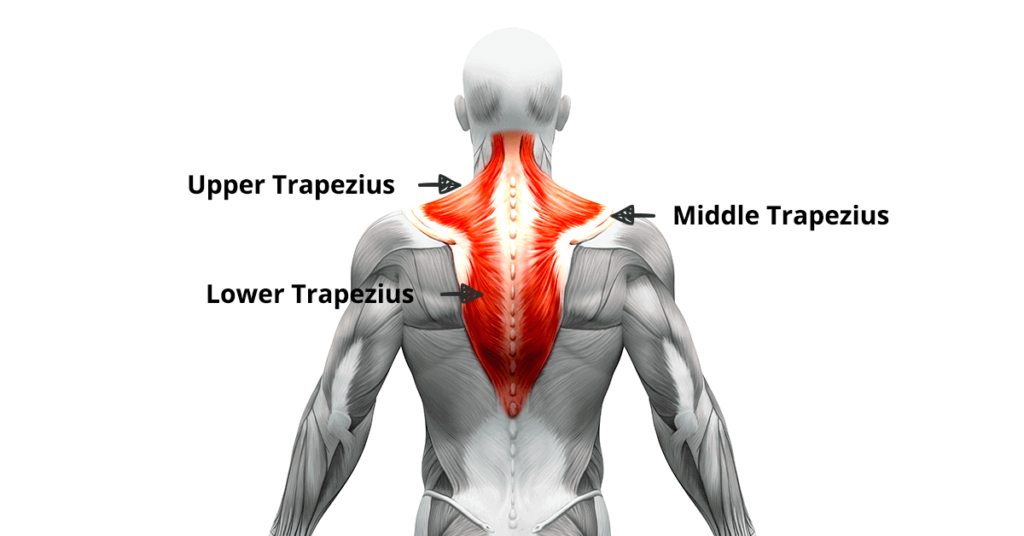
The Trapezius is a large triangular-shaped muscle that originates from the backside of the neck to the upper back and inserts into the collarbone and scapula. It is divided into three different sections namely,
- Superior fibbers or upper Trapezius
- Middle fibbers or middle Trapezius
- Inferior fibbers of lower Trapezius
Section of Trapezius
Upper Trapezius or Superior Fibbers
- It is the smallest part of the Trapezius muscle.
- Starts at the base of the posterior cervical and extends up to the top of the shoulder.
- The function of the upper traps include,
- Shoulder shrugging
- Movement of head and neck
- Aids in flexing the shoulder
Middle Trapezius or Middle Fibbers
- It covers the shoulder and scapula.
- The function of the middle traps includes,
- Protraction and retraction of the shoulder
- Stabilizing scapula during throwing activities
Lower Trapezius or Inferior Fibbers
- Stretches along the length of the scapula to the middle of the thoracic region.
- Forms a “V” shape.
- The function of the lower traps includes,
- Bringing back shoulder to its normal position after shrugging
- Stabilizing spine in positions involving rotation and bending.
Why does my Trapezius Hurt?
The pain in the Trapezius can be due to many reasons. Most often this is accompanied by other symptoms such as muscle stiffness, tightness, spasms, numbness, or tingling which might be unilateral or bilateral. All of them result in the functional limitation of the neck and shoulder concerning pain.
The conditions which might cause painful Trapezius to include,
Trapezius Muscle strains:
- Is the most common cause of Trapezius pain?
- Might happen either because of an accident, strenuous exercises, sudden muscle load, or soft tissue overuse.
- The Trapezius muscle either gets pulled or the fibers are torn.
- This usually manifests as muscle cramps or spasms.
Overuse Injuries
- Repetitive motions of the Trapezius muscle without any adequate rest or proper warm-up might lead to overuse injuries.
- The actions such as lifting heavy weights, swimming, carrying heavy loads on the shoulder, etc might put too much stress on the muscle.
- Examples of common professions prone to this include,
- Daily wage workers
- Swimmers
- Professional hikers
- Travelers
- Office workers
- Rehabilitation teams such as rehabilitation nurses, physiotherapists, occupational therapists
- Caregivers
- Retail workers in stocking
- Warehouse workers
- Farmers
- Chartered accountants
- Students
Psychological Stress
- Tension in the mind leads to tension in the body causing stiff and tense muscles.
- A few studies conducted conclude that increased tension causes an increase in muscle activates which leads to early fatigue and thus might result in overuse injury and precipitate as a muscle spasm.
Bad Posture
- Bad postures add excessive unnecessary stress on the muscles over prolonged periods.
- Most often people are seen complaining about stiff joints or muscles after awkward sitting postures or standing postures.
- Sometimes the bad posture is attained because at times it is easy. For example, sitting slouched is easier compared to sitting upright.
- Sometimes they form unconsciously. For instance, while studying a student might initial sit straight with their shoulder relaxed. But as they progress, unknowingly now they have a slouched posture with rounded shoulders, forward heads, and hunched over the study materials.
- Sometimes they are also due to habits. For instance, if a person is used to working or living in small constrained spaces, it is obvious for them to have slouched postures with elevated shoulders and flexed necks.
- All of them cause the Trapezius muscle to be in a continuous state of contraction and shortening which over the length of time leads to pain either in the form of spasms or trigger points.
Physical Trauma
- Injuries to the Trapezius muscle occur either when the muscle undergoes massive rotational or collision force.
- This might occur in act of violence, heavy contact sports, sudden jerk while lifting weights, car accidents, fall, etc.
- The consequences of the same are felt immediately and lead to high intense pain sometimes accompanied
- By a snap sound or other trauma like fractures.
How can I be certain it is the Trapezius?
There are certain signs and symptoms to determine if the Trapezius is involved or not. Common symptoms present in Trapezius pain include,
- Sore or stiff neck
- Limited neck mobility
- Pain in shoulder and upper back
- Tingling or numbness in the neck traveling down to the arms
- Painful spots or tight bands felt in the upper back
- Tender neck and upper back
- Inflammation over the upper back or the area where Trapezius is at
- Muscle twitching or spasm
- Headaches starting from the base of the skull
- Pain while Turing head or moving neck
- Weakness in arms
These symptoms are not characteristic but rather suggestive of Trapezius being involved. To be sure, the health care professional might order certain diagnostic tests such as X-rays or if needed MRI or CT.
Differntial Diagnosis
Common Differential Diagnosis or conditions that might be there if not Trapezius pain are as follows,
- Cervical spondylosis – It is a degenerative condition of the vertebral body and the intervertebral disc which might begin as the pain in the neck.
- Cervical osteoarthritis – It is a degenerative, usually age-related deterioration of the bone mass in the cervical area.
- Cervical radiculopathy – Due to innumerable causes, the nerves coming out of the cervical area might be pinched or irritated and can be perceived as pain in the neck which usually travels along the arm sometimes ceasing at the elbow and at other times in the tip of the fingers and thumb.
- Thoracic Outlet Syndrome – The thoracic outlet is the space between the first rib and the clavicle, which gives a passageway to innumerable thoracic and cervical blood vessels and nerves. When due to some pathologies, the space gets narrowed and the structures passing through it are compressed, which is termed thoracic outlet syndrome.
- Shoulder conditions like rotator cuff injury, osteoarthritis, tendinitis, tendinopathy, etc.
- Impingement syndrome – The nerve might be irritated in its course either due to some soft tissue injury or bony spurs.
- Cervical disc herniation – The intervertebral disc between the vertebrae might spur out of its location and might cause irritation to the nerve roots it compresses.
Physiotherapists to ease the Trapezius Muscle Pain
Physiotherapists are the common choice of healthcare professionals for Trapezius muscle pain along with chiropractors or osteopaths. A physiotherapist conducts a thorough examination of the painful area, takes proper history, might use certain special tests, find aggravating or relaxing factors, determine the root cause of the pain, and work accordingly. They might refer you to other healthcare professionals such as orthopedic doctors or neurologists if needed.
The first and foremost step of physiotherapeutic management is to reduce pain and swelling. This is achieved by icing and other electrotherapeutic modalities. These include Ultrasound therapy, Laser therapy, Infrared radiation, Deep heat therapy, Cryotherapy, etc. Along with these, a few advanced techniques such as dry meddling, cupping therapy, and IASTM tool might also be used to enhance healing and decrease pain. A physiotherapist might ask you to apply an ice pack every 2-3 hours in case of swelling followed by basic range of motion exercises and stretches in case of spasm.
Depending upon the pain intensity, the root cause of the pain, and how long had pain has been there, a physiotherapist might use any one or the combination of the following techniques
Dry needling
- In this technique, a thin needle is inserted into the skin, usually at points of tenderness or ailment.
- Is mainly used to treat trigger points.
- Studies have found that dry needling reduces muscle pain by untangling the knots and relaxing the muscle.
- Sometimes this is coupled with electrotherapies such as the application of TENS to reduce the tingling effect and pain.
Myofascial Release
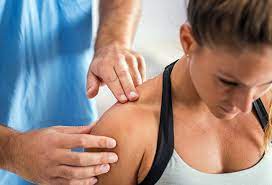
- In this technique, the therapist uses manual or hands-on techniques to reduce the tension on the myofascial.
- Since the Trapezius is a superficial muscle, relaxing the myofascial is very important and helps improve flexibility and relax the stiff musculature.
Kinesio-Taping for Trapezius Muscle Pain
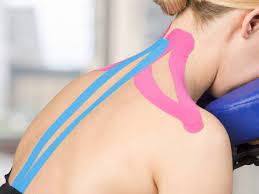
- It involves taping the muscle, literally.
- Kinesiotape is a sticky elastic tape that a certified therapist might place over the Trapezius to reduce the stress on the muscle.
- Taping forces the muscle to relax by limiting its movement and recruiting the synergist muscle.
- A few studies done on small scale basis found that following Kinesio-taping, subjects have reported a decrease in pain over 24 hours.
- Though there is a mixed response to the use of Kinesio-taping, therapists do find it an easy non-risky way to reduce pain.
Ultrasound Therapy
- Ultrasound is an electrical modality, that therapists use for pain relief, to reduce inflammation, promote healing, and break trigger points.
- Though there isn’t much evidence of the effectiveness of US on paper, clinicians do find it useful in practical sessions.
Cupping
- Cupping is a non-invasive pain relieving technique that has been used for centuries.
- A certified cupping therapist might place the small beaker-shaped cups on the painful area, and let it sit for 5-10 minutes.
- Cupping decreases the stress on the muscle, improves circulation, relaxes the muscle, and removes the toxicity.
- There are different types of cupping available such as wet cupping, static cupping, dry cupping, fire cupping, etc.
- It is a lot preferred nowadays by athletes and other professionals.
- Depending upon the need of the situation, any form can be used.
Ergonomics
- The majority of the time Trapezius pain is due to faulty posture or ergonomics.
- A physiotherapist or an occupational therapist might evaluate and give you a few tips for good ergonomics.
- For example, the therapist might ask you to take a break every 3-4 hours from the work and do some light stretches or walking. This helps to relax the muscle and move around the stiff joints.
- Alternatively, they can ask you to pair up a strenuous activity with a monotonous one to give you a break. This is termed the pacing of the activities.
Exercises and Stretches for Trapezius Muscle Pain
A variety of exercises and stretches are available to improve the strength and flexibility of the Trapezius muscle. A few of them are explained below.
Cat Stretch
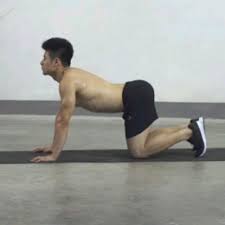
- Can be performed in sitting or lying down.
- If sitting, sit on a stool without any back support.
- Now gently arch the back as if trying to look at the ceiling.
- Hold the pose for 15-20 seconds.
- Do not hold your breath while doing the stretches.
- Alternatively, if you want to perform it lying down, get on the floor on all fours.
- Make sure the weight is equally balanced between all four limbs.
- Now gently arch the back as if trying to look at the ceiling.
- Hold the pose for 15-25 seconds and come back to neutral.
- Make sure the back is in a straight line when started and that you move only the upper back and not the lower back or hips.
Neck Stretch

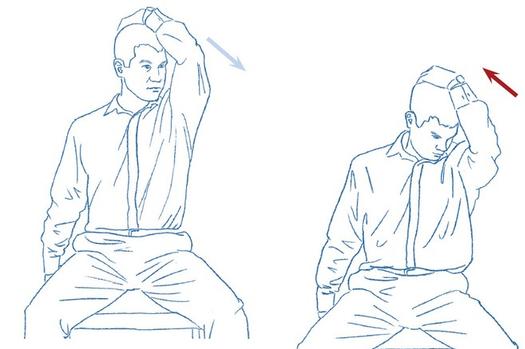
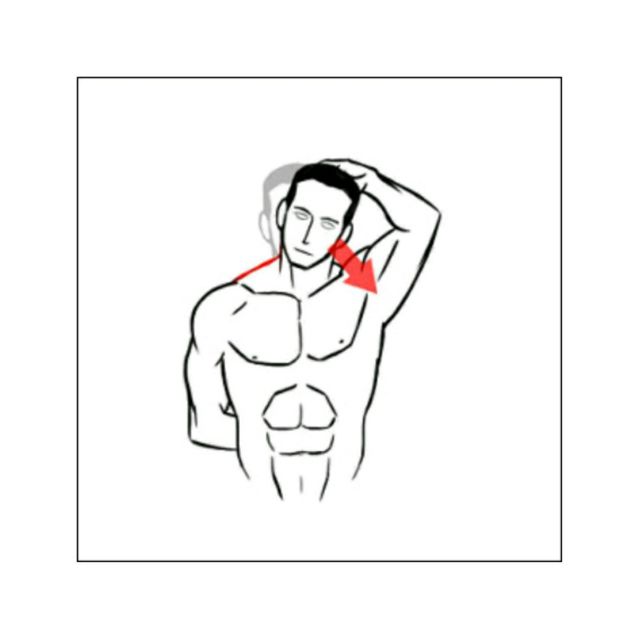
- It is a classic Trapezius stretch that might either be performed with your therapist or by yourself.
- There are three versions of this stretch for the three sections of the Trapezius.
- To perform the stretch you can sit on the chair in a comfortable position.
- If performed by self, bring your behind with elbows flexed at a 90-degree angle, or you can sit on the hand on whose side the stretching is to be performed.
- To stretch the upper fibbers,
- Tilt your neck to the other side.
- For example, if you want to stretch the right side, then tilt your ear towards the left shoulder.
- Grab the right side of the head with the left hand and give additional pull if nodded.
- Hold this stretch for 15-20 seconds.
- And then return to the neutral position.
- Take caution to only tilt your head and not the entire body.
- To stretch the middle fibbers,
- Sit down comfortably on a chair or stool with or without back support.
- Look down as if you are looking at the opposite knee or foot.
- For example, to stretch the right side, look down to your left knee or foot.
- Grab the right side of the head with the left hand and give additional downward force if needed.
- Hold this stretch for 15-20 seconds.
- And then return to the neutral position.
- Take caution on only bend your neck and not the back.
- To stretch the lower fibers,
- Look down and towards the opposite side as if looking at the opposite side’s armpit.
- For example, to stretch the right side, look downwards and sideways to the left armpit.
- Grab the right side of the head with the left hand and give additional downward and sideways force if needed.
- Hold this stretch for 15-20 seconds.
- And then return to the neutral position.
- Take caution on only rotating and tilting the neck and not the torso.
To perform any stretch make sure your body is relaxed and comfortable. Do not put too much pressure on the tight musculature as it might even tear the muscle.
Following stretching, the therapist might make a customized exercise regime suitable for the person’s needs and demands. Studies have shown that high-intensity strength training based upon the principles of progressive overload for 20 minutes has shown significant improvement in the intensity of shoulder and neck pain.
One of the common strength training exercises is shoulder shrugs and isometric neck exercises.
Shoulder shrugs

- This exercise requires dumbbells or weights. Alternatively, a person can use two same-weight water bottles.
- Can be performed in either sitting or standing.
- If sitting, preferably on a stool or chair with no armrest.
- The person holds the weight in each hand and gently elevates the shoulders while inhaling.
- They can either hold the position for 5-7 seconds or gently lower it while exhaling.
- This exercise causes the strengthening of the upper fibers of the Trapezius.
Isometric Neck Exercises

- This exercise is usually performed by the therapist.
- The person is sitting comfortably on a chair or stool.
- The therapist ideally stays behind the person.
- The therapist places their hands on the forehead and asks the patient to push forwards against the resistance applied.
- The patient is asked to hold this for a count of 5-10 seconds and then to relax.
- In a single sitting 7-10 repetitions are performed.
- In the same way, the exercise is repeated in all directions i.e. back, left side, and right side.
- Please note that the patient is asked to put only 5-10% of their strength and that no visible neck movement should be seen as it is an isometric exercise.
Please note that the exercises should not be painful in any way or form. If the pain increases during or post-exercise, stop the exercise immediately. Rest the muscle and apply ice to it. Consult with the physiotherapist before continuing anything further.
Lifestyle Adjustments for Trapezius Pain
There are simple ways to reduce or prevent Trapezius muscle pain, like,
The pacing of the activities
- It is a simple way to avoid overuse injury.
- Take frequent breaks in between the work or activity to give the muscle proper rest and time to relax.
- For instance, if you are a student, you can pace your studies such that you write for an hour or two, then take a little break by going for a walk or stretching your muscles or grabbing a snack or drink, and then restart again.
Stretching Daily
- Make stretching a part of your daily routine.
- This keeps the muscles flexible and helps to reduce the tightness in them.
- The trapezius is the most often used and tight muscle in the body due to the slouched posture which is very common to take nowadays. Apart from these continuous sitting jobs along coupled with hunching over mobiles and computers and laptops for both work and leisure have increased the work of trapezis.
Biofeedback
- You can assess your posture by yourself every 2-3 hours.
- For example, make it your conscious effort to keep the shoulder relaxed, head in a neutral position, and forearms and wrist relaxed while working on computers or laptops.
- It can be done by working in front of a mirror or by using sensor devices that alert you when you have a possibly faulty posture.
When to See a Professional for Trapezius Muscle Pain?
Generally, people brush off Trapezius muscle pain as normal or just stress from work. They try to treat it from the comfort of their home by resting, applying the ice, using normal painkillers like paracetamol or ibuprofen, being conscious of their movement, and so on.
But there are certain times when the delay to seek professional help might cost a person. This includes,
- Unbearable pain
- Inability to move shoulder, neck, or arm
- Highly inflamed Trapezius
- Tingling sensation coupled with pain and/or numbness
- Following any violent action
- Followed by light sensitivity and unbearable headaches
- Episodes of fainting or vomiting
- Loss of balance and coordination
Sometimes the pain in the neck and Trapezius might mimic certain infectious diseases like meningitis or neurological conditions like compressed disc or migraines. Whenever you are in case of doubt it is advisable to consult a professional rather than being an expert with Google.
Please note that everything said in this article is only for educational purposes. Do not consider it medical advice of any form. It is always best to consult a professional and seek direct help. The exercise mentioned in this article is for the general population. Perform them carefully and in case of doubt consult or ask a professional for advice.

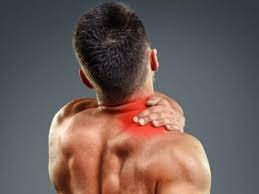
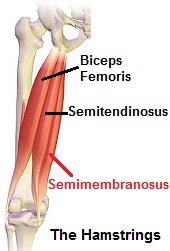
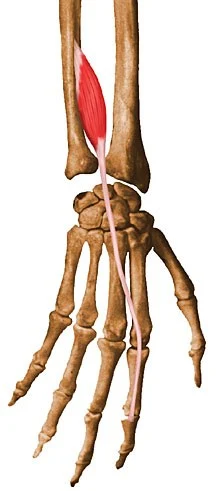
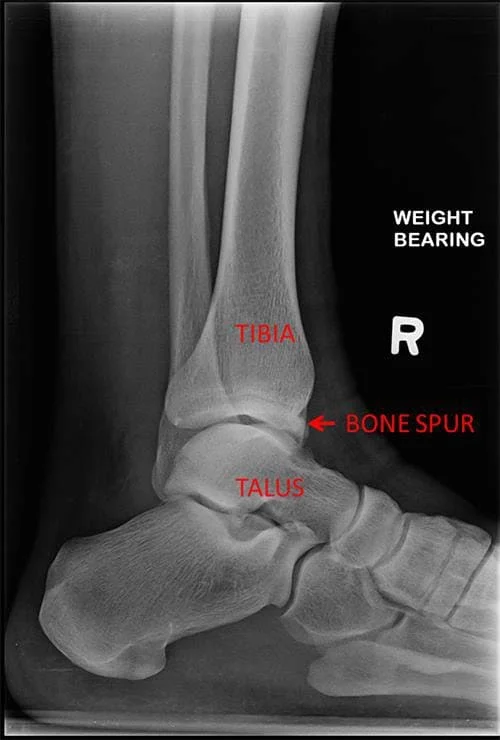
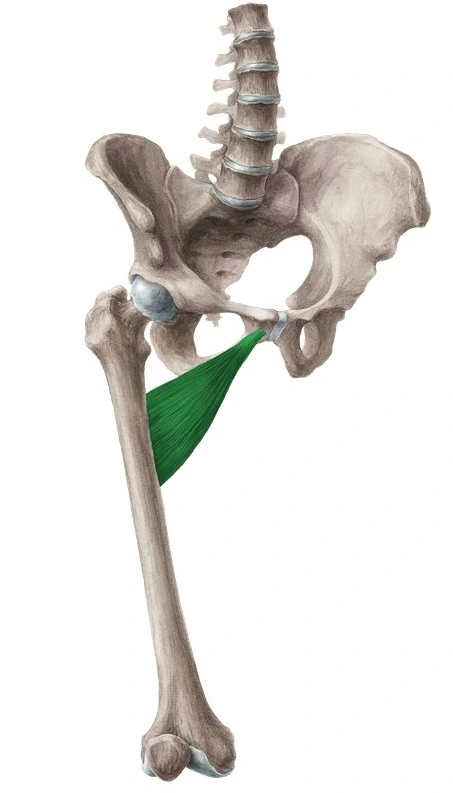
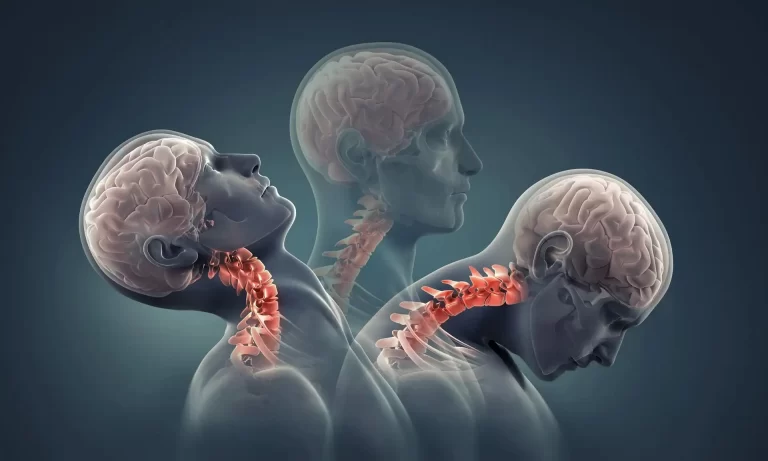
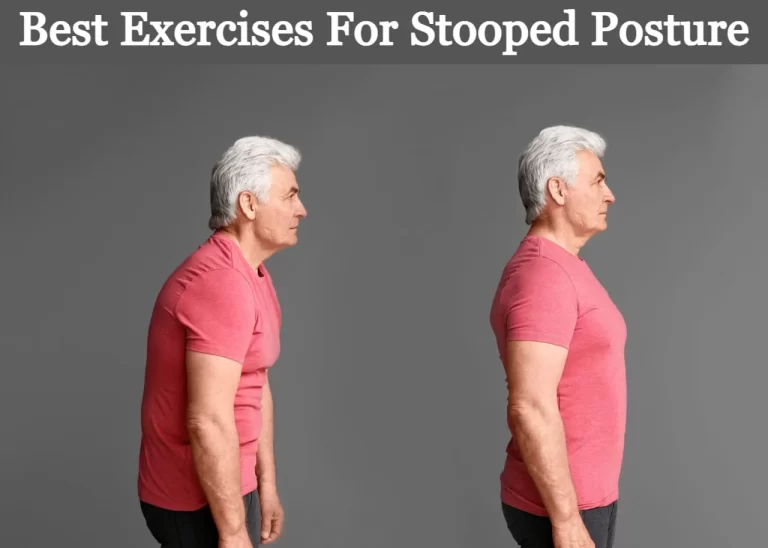
2 Comments